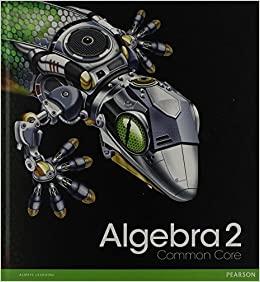Question
Hey Master, could you please have a look at this question also. I posted it yesterday but I am not sure if U had a
Hey Master, could you please have a look at this question also. I posted it yesterday but I am not sure if U had a look. Tight deadline of 2 hours. Check n let me know if u can help out please please.
Assortment optimization is something which is very relevant to the retail industry. With the increasing number of product categories, it becomes very difficult to make the assortment decisions manually and one needs to automate the process. Well see how simulation can help us here.
The basic setting well consider is that of a retail firm which has to figure out the set of products that make up its assortment. Well model customers as being utility maximizers and so a customer chooses the product which gives her the highest utility. Since the customer also has outside options and it is possible that she may not purchase any of the products offered by the firm. So well assume that the customer purchases at most one product, and if she does she buys one unit of that product. For example, consider the case where the firm can potentially offer a Samsung phone or an Apple phone or both to a customer. Suppose a particular customer derives a utility of 10 from a Samsung phone and 20 from an Apple phone. The customers utility of the outside option (not purchasing anything) is 12. Now if the firm offers both phones to the customer, the customer picks the Apple phone (since it has the highest utility), but if the firm offers only a Samsung phone in its assortment, the customer leaves without making a purchase since the no-purchase alternative has a higher utility.
Consider for simplicity the case where a firm can potentially offer three products A, B and C to a given customer. The unit revenue associated with the three products arerA, rBand rCrespectively. Customers have utilities for the three products and a utility for the no-purchase option as well. Now the firm does not know the utility of a given customer and so we model it as a random variable. Assume that a customers utility for products A, B, C are UA, UB,UC,where UAis Uniform[5, 12], UBis Uniform[3, 10] andUCis Uniform [5, 15]. The utility of the no-purchase alternative, UNP,is Uniform[0, 9]. Given this, the firm would like to build a simulation model to figure out the optimal assortment (which maximizes the expected revenue) to offer to a given customer.
What are the decision variables? Note that the question is not how many units of a product to be made available, but rather whether a product should be included in the assortment or not.What are the input random variables and what are their distributions?What is the output random variable?What is the relation between the output and the input random variables? Give the functional form.Briefly describe the simulation model to find the optimal assortment (build on questions i-iv above).
Step by Step Solution
There are 3 Steps involved in it
Step: 1

Get Instant Access to Expert-Tailored Solutions
See step-by-step solutions with expert insights and AI powered tools for academic success
Step: 2

Step: 3

Ace Your Homework with AI
Get the answers you need in no time with our AI-driven, step-by-step assistance
Get Started


